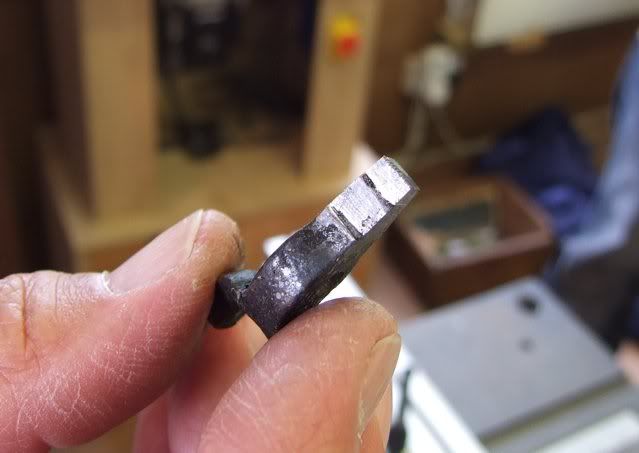woodbrains
Established Member
Hi,
Had a major disaster today, so am puttering around here to take my mind if it. Had a Record 5 1/2 lurking at the back of my tool cupboard for ages and thought I would give it a fettling. The sole was so far out of flat, that by the time I had fixed it the metal got so thin under the frog it started to bulge with the pressure of frog fixing screws and or the lever cap/ blade assy. Yes, I'm a bit teary, in as much as I wasted a whole afternoon filing and planing silicon carbide paper to end up with something not even useful as a doorstop. #-o
Anyway, my question is; someone quite rightly said that fitting thicker plane iron causes greater backlash in the adjuster screw. I always thought that the backlash on Bailey style planes was an annoyance anyway and didn't really mind it getting a bit worse for the sake of a better iron set. But now it has got me thinking; Clifton planes have thicker irons as standard. Is the backlash better sorted on these planes (and LN I suppose) or does thicker irons cause similar problems on these. It has been many years since I had my hands on either of these premium planes, so I can't remember. Obviously better tolerances between the yoke and adjuster wheel would eliminate a lot of the problem, but in retro-fit thick irons, the pawl has to travel in a greater arc, so amplifies the problem here. I notice WH now supply yokes with longer pawls to accommodate thicker irons. Has anyone tried one and do they possibly have the ancillary benefit of reducing backlash. I am also considering adding some metal plates to a cap iron where the pawl contacts the little slot there. This would negate the need for a longer pawl and would give me the opportunity to reduce the thickness of the slot a little, to reduce the dead space the pawl has to travel between adjusting in and out. If the WH replacement pawls do it, then it would save a lot of faffing, since they are only a few quid and easier to change than modifying all the cap irons. Also, anyone who has used the Rob Cosman double irons, could they say if backlash is reduced with these?
Actually, as I write I am realising that adding the plates to the cap iron would mean that the pawl would travel in a shorter arc again, so we might get back to were we where with the thin irons, in terms of backlash.
I have been living with backlash for years, so it is not a major fixation with me, but it would be nice to know.
Mike.
Had a major disaster today, so am puttering around here to take my mind if it. Had a Record 5 1/2 lurking at the back of my tool cupboard for ages and thought I would give it a fettling. The sole was so far out of flat, that by the time I had fixed it the metal got so thin under the frog it started to bulge with the pressure of frog fixing screws and or the lever cap/ blade assy. Yes, I'm a bit teary, in as much as I wasted a whole afternoon filing and planing silicon carbide paper to end up with something not even useful as a doorstop. #-o
Anyway, my question is; someone quite rightly said that fitting thicker plane iron causes greater backlash in the adjuster screw. I always thought that the backlash on Bailey style planes was an annoyance anyway and didn't really mind it getting a bit worse for the sake of a better iron set. But now it has got me thinking; Clifton planes have thicker irons as standard. Is the backlash better sorted on these planes (and LN I suppose) or does thicker irons cause similar problems on these. It has been many years since I had my hands on either of these premium planes, so I can't remember. Obviously better tolerances between the yoke and adjuster wheel would eliminate a lot of the problem, but in retro-fit thick irons, the pawl has to travel in a greater arc, so amplifies the problem here. I notice WH now supply yokes with longer pawls to accommodate thicker irons. Has anyone tried one and do they possibly have the ancillary benefit of reducing backlash. I am also considering adding some metal plates to a cap iron where the pawl contacts the little slot there. This would negate the need for a longer pawl and would give me the opportunity to reduce the thickness of the slot a little, to reduce the dead space the pawl has to travel between adjusting in and out. If the WH replacement pawls do it, then it would save a lot of faffing, since they are only a few quid and easier to change than modifying all the cap irons. Also, anyone who has used the Rob Cosman double irons, could they say if backlash is reduced with these?
Actually, as I write I am realising that adding the plates to the cap iron would mean that the pawl would travel in a shorter arc again, so we might get back to were we where with the thin irons, in terms of backlash.
I have been living with backlash for years, so it is not a major fixation with me, but it would be nice to know.
Mike.


































